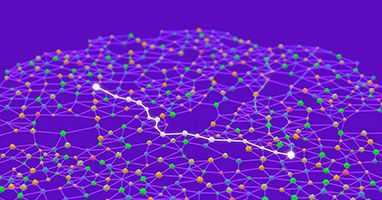Tech
SAP ECC customers bet on composable ERP to avoid upgrading | Computer Weekly

A study from Freeform Dynamics for third-party support provider Rimini Street has found that almost all of the 455 organisations surveyed are struggling to justify the cost of the upgrade.
The survey of IT and business leaders expressed concern over the subscription-based licensing of SAP’s S/4Hana enterprise resource planning (ERP) product. Almost a third of the business and IT leaders polled (31%) say they are finding it difficult to make a positive return on investment (ROI) case for S/4Hana.
Nearly two-thirds (64%) feel it takes some effort to put forward a business case to upgrade from SAP’s older Enterprise Core Components (ECC) ERP, which is being supported directly by SAP until 2033, if customers commit to transitioning to its SAP Rise offering.
The survey reported that 29% of the respondents whose organisations still run ECC are not looking to SAP for innovation. Many are instead choosing a composable ERP strategy based on offerings from multiple enterprise software providers, to integrate best-in-class products and services and emerging technologies more rapidly, preserving flexibility, cost and roadmap control, and enabling faster business outcomes.
The results from the poll suggest the majority of business and IT leaders surveyed do not fully understand SAP’s latest migration policies and deadlines. Freeform Dynamics also found that 84% express some level of concern about current messaging and how it will impact their operations.
Freeform Dynamics’ analysis of the survey data shows SAP’s constant shifts in deadlines, packaging options, transition programmes and even renaming of products is adding to the uncertainty felt by its customers, making strategic planning more difficult, but also encouraging them to explore alternative paths forward.
Over three-quarters (77%) of the IT and business leaders polled are okay with software as a service in principle, but they have reservations about SAP’s approach. In fact, 92% cited escalating and unpredictable subscription costs as a significant concern to their operations, while 95% of respondents say building a positive ROI case for S/4Hana requires significant effort or is genuinely challenging.
The survey also reported that 83% of those polled see clear value in composable approaches for faster access to emerging technologies such as artificial intelligence (AI), while 94% highlight the freedom to choose best‑fit applications for each business need.
“It’s good to see so many SAP customers now fully embracing the idea of open composable architecture and the use of loosely coupled third-party solutions to meet ERP needs,” said Dale Vile, distinguished analyst at Freeform Dynamics. “This business-led, rather than supplier-led, approach has been commonplace in other areas of IT for a while as it pays dividends in terms of flexibility, control and access to new innovations.”
In June, Rimini Street announced it would be offering new and existing customers extended support for SAP ECC 6.0, and S/4Hana support for 15 years.
Discussing the role of third-party support in helping organisations succeed with composable ERP systems, David Rowe, chief product and marketing officer at Rimini Street, said: “Rimini Street clients are leveraging our third-party support and optimisation solutions to effectively extend the life and value of proven existing SAP releases, freeing up critical funds to accelerate adoption of emerging technologies such as AI, maintain control over their roadmaps and achieve above-average performance.”
Tech
OpenAI has slipped shopping into ChatGPT users’ chats—here’s why that matters

Your phone buzzes at 6 a.m. It’s ChatGPT: “I see you’re traveling to New York this week. Based on your preferences, I’ve found three restaurants near your hotel. Would you like me to make a reservation?”
You didn’t ask for this. The AI simply knew your plans from scanning your calendar and email and decided to help. Later, you mention to the chatbot needing flowers for your wife’s birthday. Within seconds, beautiful arrangements appear in the chat. You tap one: “Buy now.” Done. The flowers are ordered.
This isn’t science fiction. On Sept. 29, 2025, OpenAI and payment processor Stripe launched the Agentic Commerce Protocol. This technology lets you buy things instantly from Etsy within ChatGPT conversations. ChatGPT users are scheduled to gain access to over 1 million other Shopify merchants, from major household brand names to small shops as well.
As marketing researchers who study how AI affects consumer behavior, we believe we’re seeing the beginning of the biggest shift in how people shop since smartphones arrived. Most people have no idea it’s happening.
From searching to being served
For three decades, the internet has worked the same way: You want something, you Google it, you compare options, you decide, you buy. You’re in control.
That era is ending.
AI shopping assistants are evolving through three phases. First came “on-demand AI.” You ask ChatGPT a question, it answers. That’s where most people are today.
Now we’re entering “ambient AI,” where AI suggests things before you ask. ChatGPT monitors your calendar, reads your emails and offers recommendations without being asked.
Soon comes “autopilot AI,” where AI makes purchases for you with minimal input from you. “Order flowers for my anniversary next week.” ChatGPT checks your calendar, remembers preferences, processes payment and confirms delivery.
Each phase adds convenience but gives you less control.
The manipulation problem
AI’s responses create what researchers call an “advice illusion.” When ChatGPT suggests three hotels, you don’t see them as ads. They feel like recommendations from a knowledgeable friend. But you don’t know whether those hotels paid for placement or whether better options exist that ChatGPT didn’t show you.
Traditional advertising is something most people have learned to recognize and dismiss. But AI recommendations feel objective even when they’re not. With one-tap purchasing, the entire process happens so smoothly that you might not pause to compare options.
OpenAI isn’t alone in this race. In the same month, Google announced its competing protocol, AP2. Microsoft, Amazon and Meta are building similar systems. Whoever wins will be in position to control how billions of people buy things, potentially capturing a percentage of trillions of dollars in annual transactions.
What we’re giving up
This convenience comes with costs most people haven’t thought about.
Privacy: For AI to suggest restaurants, it needs to read your calendar and emails. For it to buy flowers, it needs your purchase history. People will be trading total surveillance for convenience.
Choice: Right now, you see multiple options when you search. With AI as the middleman, you might see only three options ChatGPT chooses. Entire businesses could become invisible if AI chooses to ignore them.
Power of comparing: When ChatGPT suggests products with one-tap checkout, the friction that made you pause and compare disappears.
It’s happening faster than you think
ChatGPT reached 800 million weekly users by September 2025, growing four times faster than social media platforms did. Major retailers began using OpenAI’s Agentic Commerce Protocol within days of its launch.
History shows people consistently underestimate how quickly they adapt to convenient technologies. Not long ago most people wouldn’t think of getting in a stranger’s car. Uber now has 150 million users.
Convenience always wins. The question isn’t whether AI shopping will become mainstream. It’s whether people will keep any real control over what they buy and why.
What you can do
The open internet gave people a world of information and choice at their fingertips. The AI revolution could take that away. Not by forcing people, but by making it so easy to let the algorithm decide that they forget what it’s like to truly choose for themselves. Buying things is becoming as thoughtless as sending a text.
In addition, a single company could become the gatekeeper for all digital shopping, with the potential for monopolization beyond even Amazon’s current dominance in e-commerce. We believe that it’s important to at least have a vigorous public conversation about whether this is the future people actually want.
Here are some steps you can take to resist the lure of convenience:
Question AI suggestions. When ChatGPT suggests products, recognize you’re seeing hand-picked choices, not all your options. Before one-tap purchases, pause and ask: Would I buy this if I had to visit five websites and compare prices?
Review your privacy settings carefully. Understand what you’re trading for convenience.
Talk about this with friends and family. The shift to AI shopping is happening without public awareness. The time to have conversations about acceptable limits is now, before one-tap purchasing becomes so normal that questioning it seems strange.
The invisible price tag
AI will learn what you want, maybe even before you want it. Every time you tap “Buy now,” you’re training it—teaching it your patterns, your weaknesses, what time of day you impulse buy.
Our warning isn’t about rejecting technology. It’s about recognizing the trade-offs. Every convenience has a cost. Every tap is data. The companies building these systems are betting you won’t notice, and in most cases they’re probably right.
This article is republished from The Conversation under a Creative Commons license. Read the original article.![]()
Citation:
OpenAI has slipped shopping into ChatGPT users’ chats—here’s why that matters (2025, October 20)
retrieved 20 October 2025
from https://techxplore.com/news/2025-10-openai-chatgpt-users-chats.html
This document is subject to copyright. Apart from any fair dealing for the purpose of private study or research, no
part may be reproduced without the written permission. The content is provided for information purposes only.
Tech
Spark plasma sintering and diffusion technology yield high-performance permanent magnets for green industries

A research team has developed an innovative manufacturing process for permanent magnets that overcomes the limitations of conventional techniques. The team’s breakthrough significantly advances the diffusion technology, which is essential for improving magnetic performance, and creates new possibilities for applying high-efficiency magnets in eco-friendly industries such as electric vehicles, wind turbines, and robotics.
The findings are published in the Journal of Alloys and Compounds.
The joint research team from the Nano Technology Research Division at DGIST was led by Dr. Donghwan Kim and Dr. Jungmin Kim.
With the rapid growth of the electric vehicle and wind power sectors, the demand for powerful permanent magnets capable of stable operation at high temperatures has soared. A major example is the neodymium (Nd-Fe-B) permanent magnet, widely used in electric vehicle motors. However, these magnets experience a decline in magnetic performance under extreme heat, requiring the addition of heavy rare-earth elements such as terbium (Tb) and dysprosium (Dy) to maintain their strength. The challenge is that these elements are both rare and expensive.
To address this issue, the grain boundary diffusion process has been widely adopted. This technique enhances magnetic performance by infiltrating a small amount of heavy rare-earth material into the magnet’s surface. However, diffusion in this process is limited to the surface layer and does not penetrate into the magnet’s interior, making it difficult to apply to thick magnets.
To overcome this limitation, the research team combined spark plasma sintering, an advanced manufacturing technique, with the grain boundary diffusion process. By pre-mixing the diffusion material during the powder-based magnet fabrication stage, uniform diffusion was achieved throughout the magnet. Consequently, the diffusion depth increased markedly compared with that achieved by existing methods, allowing for the creation of a core–shell structure in which the magnet exhibits uniform and enhanced magnetic performance.
Remarkably, even with the same amount of rare-earth material, the new process achieved higher diffusion efficiency and significantly improved overall performance. This advancement makes it possible to produce magnets that are smaller and lighter while maintaining strong magnetic strength. It is expected to contribute to the miniaturization, weight reduction, and improved energy efficiency of electric vehicle motors. Additionally, the process shows great potential for application to large-scale magnets.
Principal Researcher Dr. Donghwan Kim stated, “This study presents a method that overcomes the limitations of the conventional grain boundary diffusion technology, enabling uniform performance throughout the magnet. It will make a significant contribution to the development of high-performance permanent magnets required in eco-friendly energy industries such as electric vehicles and wind power generation.”
More information:
Seong Chan Kim et al, Homogeneous core-shell structure formation in Nd-Fe-B sintered magnets through advanced spark plasma sintering and internal grain boundary diffusion, Journal of Alloys and Compounds (2025). DOI: 10.1016/j.jallcom.2025.183635
Citation:
Spark plasma sintering and diffusion technology yield high-performance permanent magnets for green industries (2025, October 20)
retrieved 20 October 2025
from https://techxplore.com/news/2025-10-plasma-sintering-diffusion-technology-yield.html
This document is subject to copyright. Apart from any fair dealing for the purpose of private study or research, no
part may be reproduced without the written permission. The content is provided for information purposes only.
Tech
Mystery Object From ‘Space’ Strikes United Airlines Flight Over Utah

The National Transportation Safety Board confirmed Sunday that it is investigating an airliner that was struck by an object in its windscreen, mid-flight, over Utah.
“NTSB gathering radar, weather, flight recorder data,” the federal agency said on the social media site X. “Windscreen being sent to NTSB laboratories for examination.”
The strike occurred Thursday, during a United Airlines flight from Denver to Los Angeles. Images shared on social media showed that one of the two large windows at the front of a 737 MAX aircraft was significantly cracked. Related images also reveal a pilot’s arm that has been cut multiple times by what appear to be small shards of glass.
Object’s Origin Not Confirmed
The captain of the flight reportedly described the object that hit the plane as “space debris.” This has not been confirmed, however.
After the impact, the aircraft safely landed at Salt Lake City International Airport after being diverted.
Images of the strike showed that an object made a forceful impact near the upper-right part of the window, showing damage to the metal frame. Because aircraft windows are multiple layers thick, with laminate in between, the window pane did not shatter completely. The aircraft was flying above 30,000 feet—likely around 36,000 feet—and the cockpit apparently maintained its cabin pressure.
So was it space debris? It is impossible to know without more data. A very few species of birds can fly above 30,000 feet. However, the world’s highest flying bird, Rüppell’s vulture, is found mainly in Africa. An unregulated weather balloon is also a possibility, although it’s not clear whether the velocity would have been high enough to cause the kind of damage observed. Hail is also a potential culprit.
Assuming this was not a Shohei Ohtani home run ball, the only other potential cause of the damage is an object from space.
That was the initial conclusion of the pilot, but a meteor is more likely than space debris. Estimates vary, but a recent study in the journal Geology found that about 17,000 meteorites strike Earth in a given year. That is at least an order of magnitude greater than the amount of human-made space debris that survives reentry through Earth’s atmosphere.
A careful analysis of the glass and metal impacted by the object should be able to reveal its origin.
This story originally appeared on Ars Technica.
-

 Tech1 week ago
Tech1 week agoAustralian airline Qantas says millions of customers’ data leaked online
-

 Tech1 week ago
Tech1 week agoUK police to upgrade illicit asset recovery system | Computer Weekly
-

 Tech6 days ago
Tech6 days agoWhat Is Google One, and Should You Subscribe?
-

 Tech4 days ago
Tech4 days agoWhy the F5 Hack Created an ‘Imminent Threat’ for Thousands of Networks
-

 Entertainment1 week ago
Entertainment1 week agoKaty Perry and Justin Trudeau are dating: Report
-

 Entertainment1 week ago
Entertainment1 week agoVictoria Beckham thinks Brooklyn Beckham is fed up with Nicola Peltz drama?
-

 Business1 week ago
Business1 week agoEnvironment minister Bhupender Yadav heads to Brazil: India engages in pre-talks ahead of COP30; climate finance and adaptation on agenda – The Times of India
-

 Tech1 week ago
Tech1 week agoA New Algorithm Makes It Faster to Find the Shortest Paths






